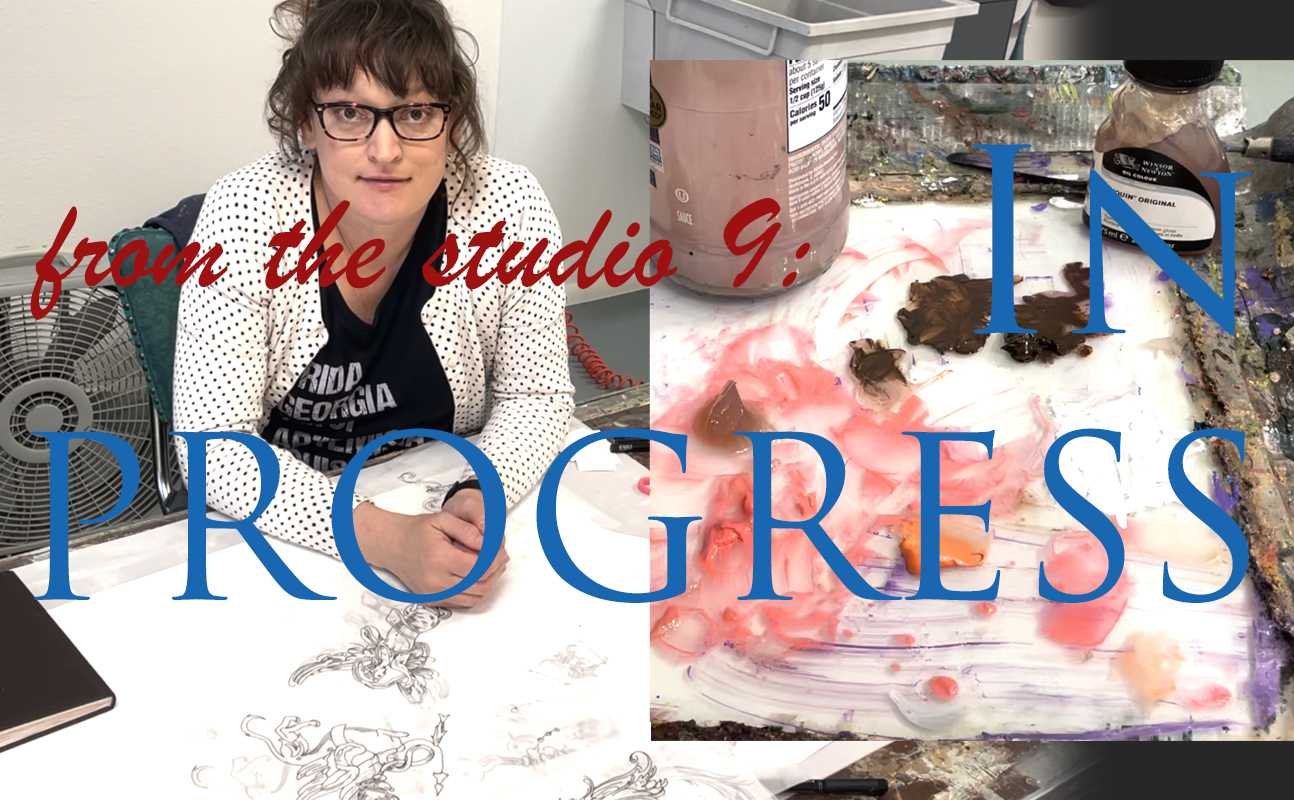On my third week as an artist in residence at Jentel Arts in Wyoming, I am making decent progress on a large painting! I’ve been working to fill out a pattern that I intend to incorporate into the piece as well as glazing a transparent layer of color in this background pattern area in order to develop the foreground versus background space. In addition to this, I have been trying out a new way to create inventive figures that will suggest a conceptual narrative within the work. This is one of the more difficult stages of creating the work, but in the end—rewarding! This new strategy for creating my own figures is based off of antique Roman grotesque forms and the Surrealist process of exquisite corpse, which is a method by which a collection of words or images is assembled. It’s starting to come together! I hope you enjoy seeing my studio processes and take a look below as you read.
I spend a good amount of time researching historical patterns that can work with my paintings. My research has been surrounding the history of Chinoiserie. Back in the 17th and 18th centuries, when traveling the world was practically an impossibility for the general population, people relied on objects, artworks, and word-of-mouth to learn about the far-flung corners of the map. Thanks to a global network of trade routes, many cultures were getting to know one another for the first time not through physical meetings, but primarily through goods who sold them. In Europe, an overwhelming fascination with China—and in particular, Chinese porcelain—developed among tastemakers, which fueled an immense demand for East Asian goods, particularly within the realm of the decorative arts. I find it interesting the parallel that occurs today as people are able to travel the world on-line and form fantastic or distorted ideas about cultures that they have never visited before.
The pattern for this painting contains imagery of a hunter with a gun and various animals that he may be aiming at, which I found well-suited to the Wyoming frontier and history. The figures that I have been developing ideas out of come from another time and place all together–the Domus Aurea in Rome, which I had the chance to visit shortly before my residence in Wyoming. it is a fascinating place. After the devastating fire of 64 AD, which destroyed much of the centre of Rome, the emperor Nero began building a new residence, which for pomp and splendour went down to history by the name of the Domus Aurea. After Nero’s death his successors decided to erase all traces of the emperor and his palace. The luxurious chambers were deprived of their cladding and sculptures and filled in with earth up to the vaults to be used as the substructures for other buildings. After they were buried, they remained unknown until the Renaissance. Only then, after some chance discoveries, did artists with a passion for antiquities, such as Pinturicchio, Ghirlandaio, Raphael and Giulio Romano, begin to explore what they thought of as “underground grottoes”, to copy the decorative motifs in them. Because of their location, they were called “grotesques.”
